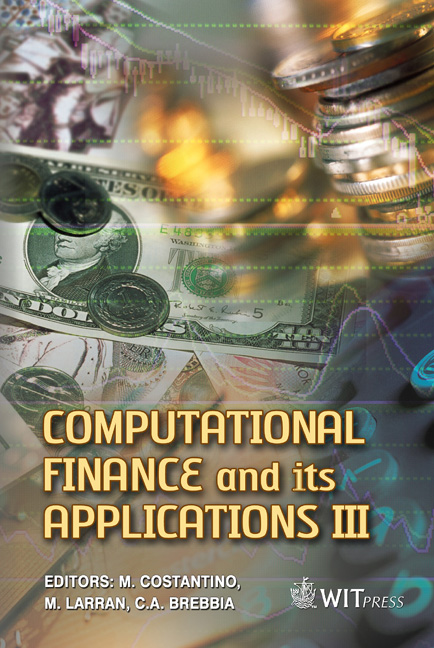Computation And Asymptotic Properties Of Estimated Coherent Risk Measures
Price
Free (open access)
Volume
41
Pages
10
Page Range
175 - 184
Published
2008
Size
254 kb
Paper DOI
10.2495/CF080171
Copyright
WIT Press
Author(s)
D. J. Miller & M. Kim
Abstract
Recent advances in mathematical finance established linkages among several key concepts related to coherence, distorted risk measures, and information theory. The purpose of this paper is to extend these theoretical results for empirical applications in computational finance. First, we use a concentrated (dual) entropy approach to derive a computational algorithm for estimating the parameters of a distorted probability model associated with a coherent risk measure for a given sample of observed data. Second, we derive the asymptotic sampling properties of the estimated model parameters, which may be used to conduct classical hypothesis tests or to form other statistical inferences based on the estimated coherent risk measure. Third, we note that researchers may also require an estimate of the net loss distribution, and we propose an information theoretic procedure for jointly estimating the net loss probability model and the distorted probability distribution associated with a particular coherent risk measure. Keywords:coherence, distorted risk measure, entropy, extremum estimator, information theory. 1 Introduction Risk measures based on the distribution of potential asset losses or returns are widely used in empirical finance, and prominent applications of these tools include determining insurance premia, option prices, margin deposits for hedged and speculative positions in futuresmarkets, and capital reserve requirements for banks and other firms (e.g., see Wirch and Hardy [1]). To be specific, suppose an asset has risk or net loss represented by random variable X with cumulative distribution function (CDF) F(x) = P(X ≤ x). A risk measure is a mapping ρ(X) : R →R+
Keywords
coherence, distorted risk measure, entropy, extremum estimator, information theory.





